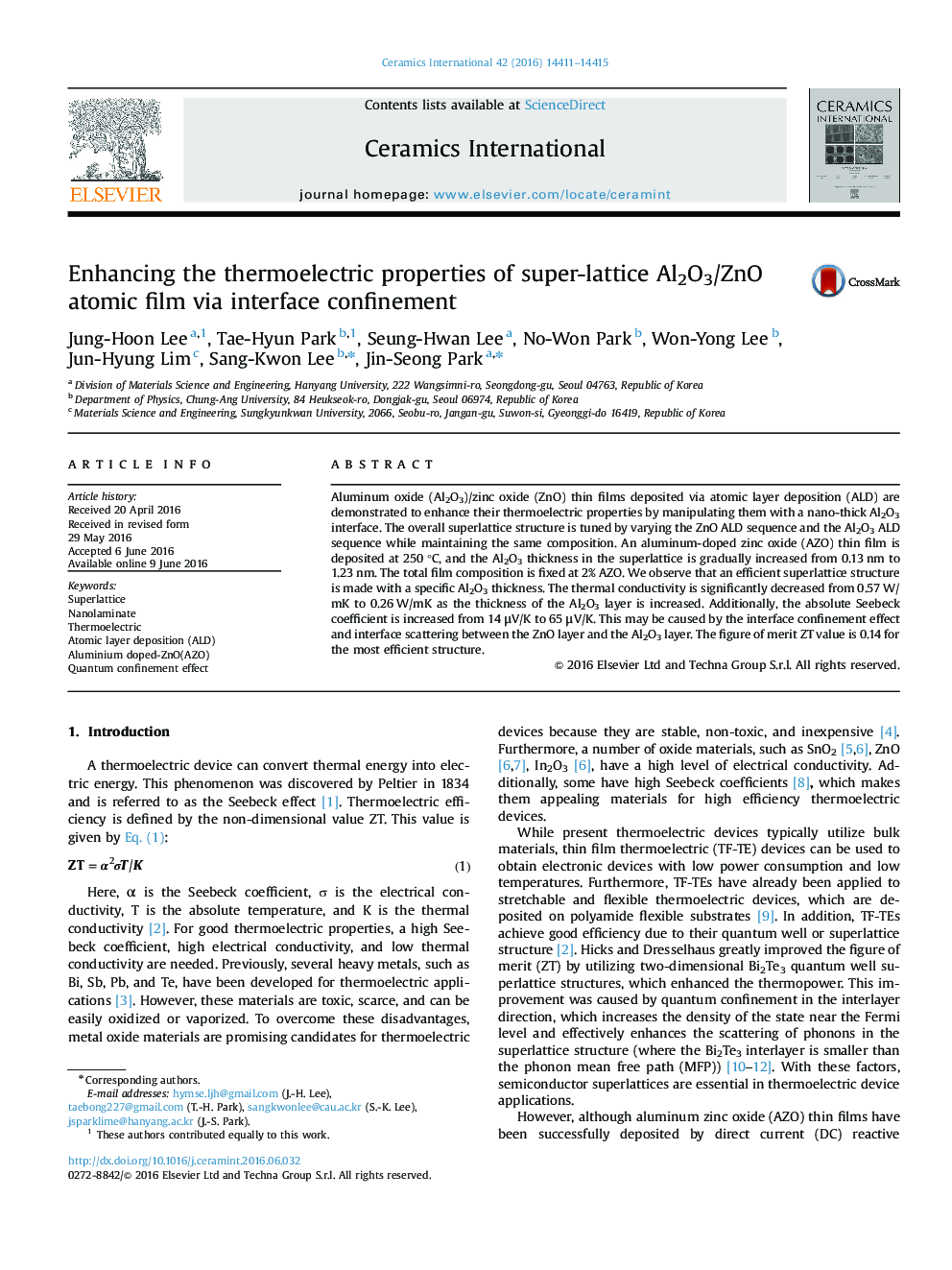| Article ID | Journal | Published Year | Pages | File Type |
|---|---|---|---|---|
| 10624035 | Ceramics International | 2016 | 5 Pages |
Abstract
Aluminum oxide (Al2O3)/zinc oxide (ZnO) thin films deposited via atomic layer deposition (ALD) are demonstrated to enhance their thermoelectric properties by manipulating them with a nano-thick Al2O3 interface. The overall superlattice structure is tuned by varying the ZnO ALD sequence and the Al2O3 ALD sequence while maintaining the same composition. An aluminum-doped zinc oxide (AZO) thin film is deposited at 250 °C, and the Al2O3 thickness in the superlattice is gradually increased from 0.13 nm to 1.23 nm. The total film composition is fixed at 2% AZO. We observe that an efficient superlattice structure is made with a specific Al2O3 thickness. The thermal conductivity is significantly decreased from 0.57 W/mK to 0.26 W/mK as the thickness of the Al2O3 layer is increased. Additionally, the absolute Seebeck coefficient is increased from 14 μV/K to 65 μV/K. This may be caused by the interface confinement effect and interface scattering between the ZnO layer and the Al2O3 layer. The figure of merit ZT value is 0.14 for the most efficient structure.
Keywords
Related Topics
Physical Sciences and Engineering
Materials Science
Ceramics and Composites
Authors
Jung-Hoon Lee, Tae-Hyun Park, Seung-Hwan Lee, No-Won Park, Won-Yong Lee, Jun-Hyung Lim, Sang-Kwon Lee, Jin-Seong Park,
